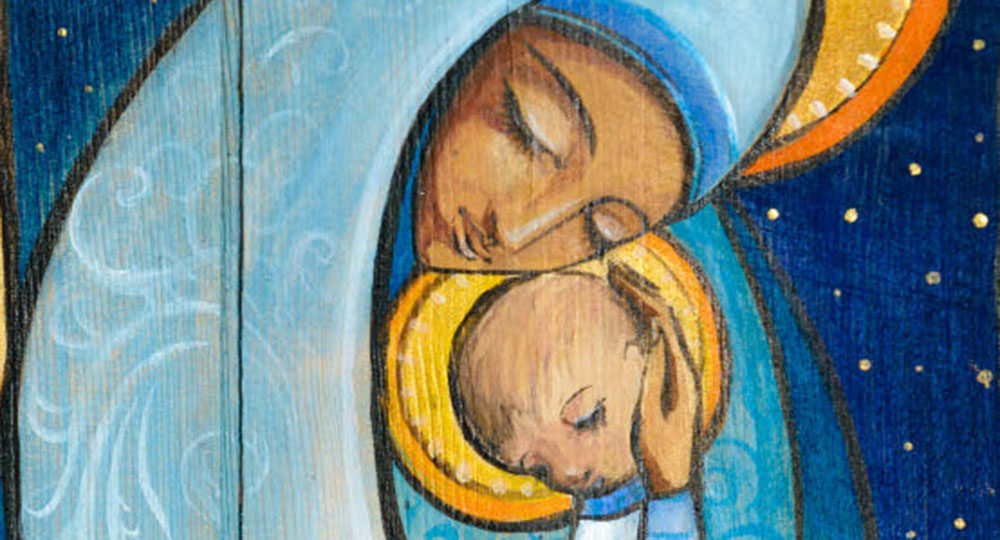The Woman God Chose
While waiting to check out at the grocery store recently, a publication caught my eye. It was a reissue of LIFE magazine on Mary, the mother of Jesus. I began to peruse it, more out of curiosity than interest, until I read the introduction: “Whoever she [Mary] was, she must have been substantial, smart and strong. She must have been a fine mother.”1 True. But she was also much more.
Of all the women in the world, Mary was handpicked by God to be the vehicle to bring Israel’s Messiah into the world. For centuries Israel had awaited the Redeemer spoken of by the prophets. Then one day, God sent the angel Gabriel to a young woman in Nazareth whose profound faith and royal lineage made her the perfect vessel for His use. Gabriel told Mary, “Rejoice, highly favored one, the Lord is with you: blessed are you among women” (Lk. 1:28).
Unfortunately, much misinformation surrounds this blessed woman. What do we know about her that isn’t based on misconceptions and church folklore?
Her Background
First, Mary was Jewish. My wife, who grew up Jewish, was practically a teenager before she discovered Mary wasn’t Catholic. There were no Roman Catholics in Mary’s time. There were only Jews—who worshiped the true and living God—and pagans, who worshiped idols.
Second, Mary was a direct descendant of King David through Bathsheba’s son Nathan, from the tribe of Judah. Her lineage is recorded in the Gospel of Luke. Mary’s husband, Joseph, descended from David and Bathsheba’s son Solomon. He was the royal heir to a throne that had been desolate for almost 600 years. When Caesar Augustus decreed that people were to return to their ancestral homes for taxation purposes, both Mary and Joseph had to go to Bethlehem, David’s hometown (1 Sam. 16:1, 4).
By then, thousands of years had passed since the Lord had promised to send a Redeemer through the “Seed” of a woman to crush the head of Satan, the serpent (Gen. 3:15). As biblical revelation unfolded, the promise came to rest squarely on a female descendant of David who would (1) be a virgin (Isa. 7:14), (2) bear a Son (v. 14), and (3) deliver that Son in Bethlehem Ephrathah (Mic. 5:2).
Mary’s real name would have been Miriam. Wrote Bible scholar Dr. Victor Buksbazen, “‘Miriam’ was her true biblical name in Hebrew. ‘Mary’ is the modern English version of the name ‘Miriam.’”2
As for her age, some speculate she was 12 to 15 and that Joseph was an older widower with children. However, Scripture provides no basis for this theory. Nothing indicates Joseph was much older than Mary or that he was previously married. And sound Bible scholars have placed Mary’s age at 14 to 16.
Her Knowledge
Mary clearly knew the Hebrew Scriptures and believed them. Nevertheless, when she saw the angel, she was “troubled,” or alarmed (Lk. 1:29). Of course she was troubled! Prior to an angel appearing to the priest Zacharias approximately six months earlier, there had been no prophetic vision, utterance, or prophet in Israel for 400 years. Then Gabriel
told Mary,
And behold, you will conceive in your womb and bring forth a Son, and shall call His name Jesus. He will be great, and will be called the Son of the Highest; and the Lord God will give Him the throne of His father David. And He will reign over the house of Jacob forever, and of His kingdom there will be no end. The Holy Spirit will come upon you, and the power of the Highest will overshadow you; therefore, also, that Holy One who is to be born will be called the Son of God (vv. 31–33, 35).
What a proclamation! Mary’s son would reestablish the Israelite kingdom and reign on David’s throne forever. He would be the Messianic hope her people had cherished since the days of the patriarchs. “How can this be, since I do not know a man?” she asked (v. 34). Gabriel told her the Holy Spirit would “overshadow” her, and “that Holy One who is to be born will be called the Son of God” (v. 35).
Her response showed her absolute trust in the God of Israel: “Behold the maidservant of the Lord! Let it be to me according to your word” (v. 38).
Her Magnificat
Mary then went to the hill country of Judea to visit her elderly, pregnant cousin Elizabeth, Zacharias’s wife. When Elizabeth “heard the greeting of Mary, . . . the babe leaped in her womb; and Elizabeth was filled with the Holy Spirit. ‘But why is this granted to me, that the mother of my Lord should come to me? Blessed is she who believed, for there will be a fulfillment of those things which were told her from the Lord’” (Lk. 1:41, 43, 45).
Elizabeth was six months pregnant with John the Baptist (v. 36). Her greeting confirmed Gabriel’s message to Mary and probably encouraged her. However, Scripture does not tell us Mary was yet pregnant. It merely says Elizabeth called her “the mother of my Lord” because the Holy Spirit prompted her to do so.
Mary’s response to Elizabeth has been called the “Magnificat” from the first word of the Latin translation.3 This beautiful passage (vv. 46–55) is actually a poem that begins with Mary’s astounding declaration of unconditional love for and trust in the Lord: “My soul magnifies the Lord, and my spirit has rejoiced in God my Savior” (vv. 46–47).
These 10 verses include at least 15 clear references from the Jewish Scriptures, the only Bible that existed in Mary’s day. She referred to God as “my Savior,” acknowledging her need of salvation. She praised His regard for “the lowly state of His maidservant,” acknowledging her subservience to the Almighty and what probably was her lower-class status in Israelite society. She and Joseph were so poor they could only offer a pair of turtledoves as a sacrifice when they dedicated Jesus at the Temple (2:24; cf. Lev. 12:8).
She also extoled God’s might (Lk. 1:49), mercy (v. 50), strength (v. 51), judgment of the proud (vv. 51–52), exaltation of the lowly (v. 52), and salvation of Israel (vv. 54–55). Her profound faith in God and His faithfulness, along with her knowledge of Scripture, makes it easy to see why God chose her.
Clearing Up Misconceptions
Because much unbiblical doctrine revolves around Mary, it’s important to examine God’s Word to avoid being misled.
Nowhere does the Bible teach that Mary was immaculately conceived, that she remained a virgin in perpetuity, that she was assumed into heaven, or that she is a coredemptrix in the salvation of lost humanity. The Bible teaches that only Jesus came to Earth as God incarnate to redeem mankind from sin, in fulfillment of what the Jewish
prophets foretold.
Nor does the Bible teach that Mary assumed attributes of deity upon her death. Only God is omniscient and omnipresent, so He alone can hear and answer prayer and know everything transpiring on Earth. The Bible teaches we are to worship and pray to God alone.
At this time of year, we also hear sermons speculating that people probably whispered about Mary because she was pregnant out of wedlock. However, Scripture teaches the opposite: “Joseph her husband, being a just man, and not wanting to make her a public example, was minded to put her away secretly” (Mt. 1:19). Clearly, she was not already a public example, and Joseph was planning to ensure she did not become one.
Jesus also read the Torah in the synagogue, a privilege withheld from men considered illegitimate. Plus, people said of Jesus, “Where did this Man get this wisdom and these mighty works? Is this not the carpenter’s son?” (13:54–55). Clearly, His parentage was not an issue. Furthermore, it was important that Jesus be regarded as Joseph’s legitimate son because through Joseph came the legal right to David’s throne. Scripture also teaches Mary had other children after Jesus (vv. 55–56).
Mary probably was indeed a “fine mother.” But she was a finer example of what it means to have faith in God.
ENDNOTES
-
- “His—And Everyone’s Mother,” LIFE 17, no. 7 (April 14, 2017), 6.
- Victor Buksbazen, Miriam: The Virgin of Nazareth (Philadelphia, PA: Spearhead Press, an imprint of The Friends of Israel Gospel Ministry, Inc.: 1963), 13.
- Charles C. Ryrie, Ryrie Study Bible NKJV (Chicago, IL: Moody, 1985), 1,576 n Luke 1:46–56.







